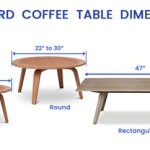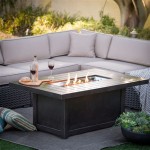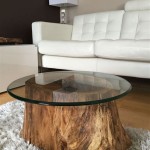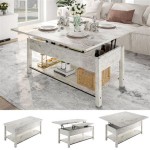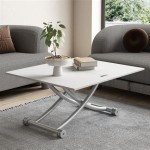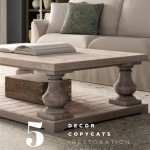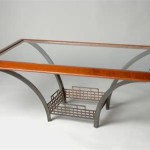The Enduring Appeal of the Wooden Live Edge Coffee Table
The wooden live edge coffee table has emerged as a prominent design element in contemporary interiors, blending rustic charm with modern sophistication. Characterized by its natural, unfinished edges, this type of furniture showcases the inherent beauty of wood, offering a unique and organic aesthetic that complements a wide range of decorating styles. This article explores the defining features, material considerations, design variations, and maintenance requirements of wooden live edge coffee tables, providing valuable insights for prospective buyers and design enthusiasts.
A live edge, also referred to as a natural edge, refers to the edge of a wooden slab that retains its original, unaltered contour. This means that the natural curves, imperfections, and bark inclusions present on the tree's exterior are preserved, creating a visually striking and one-of-a-kind piece of furniture. Unlike traditional furniture with clean, straight lines, the live edge introduces an element of unpredictability and organic artistry, rendering each table a unique testament to the natural world.
Understanding the Key Characteristics of Live Edge Coffee Tables
Several key attributes define the overall appearance and functionality of a wooden live edge coffee table. Understanding these elements is crucial when selecting a table that aligns with specific design preferences and functional requirements.
Shape and Size: The shape of the live edge coffee table is inherently dictated by the original shape of the wood slab. While rectangular and oval shapes are common, asymmetrical and naturally irregular forms are also prevalent. The size of the table must be carefully considered in relation to the surrounding living space. A table that is too large can overwhelm the room, while a table that is too small may appear insignificant. The ideal dimensions should provide adequate surface area for everyday use without obstructing the flow of traffic or detracting from the overall aesthetics of the room.
Wood Species: The choice of wood species significantly impacts the table's durability, appearance, and overall aesthetic. Popular options include walnut, oak, maple, cherry, and exotic hardwoods like redwood and acacia. Walnut offers a rich, dark color and distinctive grain patterns, while oak is known for its durability and classic appeal. Maple provides a lighter, more neutral tone, and cherry develops a warm, reddish hue over time. Exotic hardwoods introduce unique colors, grain patterns, and textural variations, adding a touch of sophistication and exclusivity to the piece.
Base Design: The base of a live edge coffee table plays a crucial role in its structural integrity and overall design. Common base options include metal legs, wooden legs, and pedestal bases. Metal legs, often made of steel or iron, provide a modern and industrial aesthetic, while wooden legs complement the natural wood slab, creating a cohesive and organic look. Pedestal bases offer stability and visual interest, particularly when crafted from unique materials or featuring intricate designs. The base should be chosen to complement the wood slab and enhance the table's overall aesthetic appeal.
Finish and Treatment: The finish applied to the live edge coffee table protects the wood from moisture, scratches, and stains, while also enhancing its natural beauty. Common finish options include oil-based finishes, water-based finishes, and polyurethane. Oil-based finishes penetrate the wood, providing a natural look and feel, while water-based finishes offer a more durable and environmentally friendly option. Polyurethane provides a protective layer that is resistant to scratches and spills, making it a popular choice for high-traffic areas. The finish should be selected to complement the wood species and desired aesthetic.
The integrity of the live edge itself is a critical consideration. The bark may be left intact, carefully secured, or fully removed and the edge sanded smooth. If the bark is present, it must be appropriately treated to prevent insect infestation and ensure its longevity. A smooth, sanded edge provides a cleaner, more modern look, while retaining the natural contours of the wood.
Exploring Design Variations and Customization Options
The versatility of wooden live edge coffee tables allows for a wide range of design variations and customization options, enabling homeowners to create a piece that perfectly reflects their individual style and preferences.
Epoxy Resin Inlays: Epoxy resin can be used to fill voids and imperfections in the wood slab, creating a visually striking and unique design element. The resin can be tinted in various colors to complement the wood or create a contrasting effect. Epoxy resin inlays can also be used to create a "river table" effect, where a clear or colored resin stream flows through the center of the wood slab, mimicking a natural riverbed. Such additions add visual interest and highlight the natural features of the wood.
Metal Accents: Incorporating metal accents, such as metal inlays, corner brackets, or decorative hardware, can add a touch of industrial chic to a live edge coffee table. Metal accents can be used to reinforce the table's structure, highlight its design features, or create a contrasting element that complements the natural wood. The choice of metal, such as steel, brass, or copper, can further enhance the table's overall aesthetic.
Leg Style and Placement: The style and placement of the table legs can significantly impact its overall appearance. Tapered legs, hairpin legs, and geometric legs are popular options that can complement various design styles. The legs can be positioned in a variety of ways, such as splayed outwards for a mid-century modern look or placed closer together for a more contemporary aesthetic. The height of the legs should also be carefully considered to ensure that the table is at a comfortable height for use.
Surface Texture and Treatment: The surface texture of the wood slab can be altered to create different visual and tactile effects. A lightly sanded surface retains some of the wood's natural imperfections, while a heavily sanded surface creates a smooth, refined look. Different finishing techniques, such as distressing or staining, can be used to enhance the wood's natural character and create a unique patina. The type of finish selected also influences the tactile experience of the table, with some finishes offering a smoother, more satin-like feel.
Size and Proportions: Customizing the size and proportions of the live edge coffee table allows for a perfect fit within the intended space. A larger table can serve as a focal point in a living room, while a smaller table can be used in a more intimate setting. The height, width, and length of the table should be carefully considered in relation to the surrounding furniture and the overall dimensions of the room. The thickness of the wood slab also contributes to the table’s visual weight and stability.
Caring for and Maintaining a Wooden Live Edge Coffee Table
Proper care and maintenance are essential to preserve the beauty and longevity of a wooden live edge coffee table. Regular cleaning, protection from moisture, and occasional refinishing are key steps in ensuring that the table remains a cherished piece of furniture for years to come.
Cleaning: Regular cleaning is essential to remove dust, dirt, and spills from the table's surface. A soft, damp cloth can be used to wipe down the table on a regular basis. Avoid using harsh chemicals or abrasive cleaners, as they can damage the finish and wood. For stubborn stains, a mild soap solution can be used, followed by wiping the table dry with a clean cloth.
Protection from Moisture: Wood is susceptible to moisture damage, so it is important to protect the live edge coffee table from excessive humidity and spills. Use coasters and placemats to prevent water rings and stains. Wipe up spills immediately to prevent them from penetrating the wood. Avoid placing the table in direct sunlight or near sources of heat, as these can cause the wood to dry out and crack.
Refinishing: Over time, the finish on a live edge coffee table may become worn or damaged. Refinishing the table can restore its original beauty and protect the wood from further damage. Refinishing involves sanding down the existing finish, applying a new stain or finish, and sealing the wood with a protective topcoat. Refinishing is best performed by a professional furniture refinisher, but can also be done as a DIY project with the right tools and knowledge.
Addressing Cracks and Checks: As wood ages and dries, it is common for cracks and checks (small splits in the wood grain) to develop. These are a natural part of the wood's character and do not necessarily compromise its structural integrity. Small cracks can be filled with wood filler or epoxy resin to prevent them from spreading. Larger cracks may require more extensive repairs, such as reinforcing the wood with metal brackets or wood splines. Consulting with a professional woodworker is advisable for significant structural repairs.
Preventing Insect Infestation: If the live edge coffee table retains its bark, it is essential to protect it from insect infestation. Regularly inspect the bark for signs of insect activity, such as small holes or sawdust. If insects are detected, treat the wood with a wood preservative or insecticide specifically designed for use on furniture. Maintaining a dry environment can also help prevent insect infestations.
The enduring appeal of the wooden live edge coffee table lies in its ability to seamlessly blend natural beauty with functional design. By understanding the key characteristics, design variations, and maintenance requirements associated with this unique type of furniture, individuals can make informed decisions and select a piece that will enhance their living space for years to come. The inherent individuality of each live edge slab ensures that every table is a conversation starter, a work of art that reflects the unique character of the wood from which it was crafted.

Caius Suar Live Edge Coffee Table 100l X 50w

Live Edge Teak Wood Coffee Table Sg Home Furniture

Coffee Table South American Walnut Live Edge Wood Modern With U Shaped Legs

Vena Live Edge Coffee Table Waney Rustic Solid Wood

Markrid Modern Solid Wood Coffee Table

Walnut Live Edge Rustic Wood Coffee Table Farmhouse Mid Century Modern

Nakashima Style Live Edge Coffee Table Stockton Heritage

Natural Sky Blue Live Edge Coffee Table Furniture And Things

Live Edge Teak Wood Coffee Table Sg Home Furniture

Caius Suar Live Edge Coffee Table 100l X 50w
